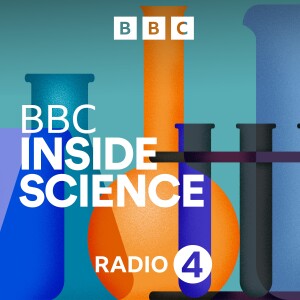
Coronavirus: The types of vaccine; How the UK is scaling up vaccine production
 2020-09-10
2020-09-10
Download
Right click and do "save link as"
Vaccination has eradicated smallpox, a disease that decimated populations through the 20th century. Polio is almost gone too, and measles is no longer the pervasive childhood threat it once was. It’s clear that vaccination is our best tool to halt the threat of SARS CoV 2, and allow the return to a less restricted way of life. But it takes time to develop and test vaccines although the technologies used to create them have moved on significantly over the last few decades.
Professor Jonathan Ball, a virologist at Nottingham University, talks Adam Rutherford through the several types of vaccine that are being explored in the effort to stop the coronavirus pandemic, and how they work. These include live attenuated virus vaccines that are genetically modified to appear to be SARS CoV 2 to the immune system, and RNA subunit vaccines that trick the body into recognising the virus. He discusses the way different vaccines work against disease, and how they trigger different types of immune response.
Before a vaccine is approved for general use it has to pass through three trial phases, and Jonathan discusses the vaccines that are already going through phase 2 and 3 in the UK.
If and when a vaccine gets approved, it needs to be produced to exacting standards and in quantities great enough to immunise the whole population. The UK Vaccine Manufacturing Taskforce was set up in May to coordinate the effort to make a vaccine. Steve Bagshaw, part of the Taskforce, explains that some vaccines have already been produced around the UK, prior to clinical approval in an effort to ensure that any approved vaccine is ready to be distributed as fast as possible to those at risk. This is unprecedented, and means the pathway to vaccine distribution could be faster than any that have gone before.
Presented by Adam Rutherford
Produced by Fiona Roberts and Rory Galloway
view more
More Episodes
Should we bring back extinct animals?
 2024-11-07
2024-11-07
 2024-11-07
2024-11-07
How green is space travel?
 2024-10-24
2024-10-24
 2024-10-24
2024-10-24
Is lab-grown meat the future of food?
 2024-10-17
2024-10-17
 2024-10-17
2024-10-17
The first civilian spacewalk
 2024-10-10
2024-10-10
 2024-10-10
2024-10-10
The Grenfell cladding
 2024-10-03
2024-10-03
 2024-10-03
2024-10-03
Predicting everything
 2024-09-26
2024-09-26
 2024-09-26
2024-09-26
Why aren’t we eating more insects?
 2024-09-19
2024-09-19
 2024-09-19
2024-09-19
Beavers of London
 2024-09-12
2024-09-12
 2024-09-12
2024-09-12
Going for gold
 2024-09-05
2024-09-05
 2024-09-05
2024-09-05
How much of a risk is space junk?
 2024-08-29
2024-08-29
 2024-08-29
2024-08-29
CERN’s Supercollider Plan
 2024-08-22
2024-08-22
 2024-08-22
2024-08-22
Should Antarctica be off limits?
 2024-08-15
2024-08-15
 2024-08-15
2024-08-15
Wimbledon Grass Science
 2024-08-08
2024-08-08
 2024-08-08
2024-08-08
Sun, sea... and science
 2024-08-01
2024-08-01
 2024-08-01
2024-08-01
What makes an effective protest?
 2024-07-25
2024-07-25
 2024-07-25
2024-07-25
Taylor Swift Seismology
 2024-07-18
2024-07-18
 2024-07-18
2024-07-18
Are implanted brain chips the future?
 2024-07-11
2024-07-11
 2024-07-11
2024-07-11
How do we solve antibiotic resistance?
 2024-07-04
2024-07-04
 2024-07-04
2024-07-04
Why do we sleep?
 2024-06-27
2024-06-27
 2024-06-27
2024-06-27
012345678910111213141516171819
Create your
podcast in
minutes
- Full-featured podcast site
- Unlimited storage and bandwidth
- Comprehensive podcast stats
- Distribute to Apple Podcasts, Spotify, and more
- Make money with your podcast
It is Free
- Privacy Policy
- Cookie Policy
- Terms of Use
- Consent Preferences
- Copyright © 2015-2024 Podbean.com


